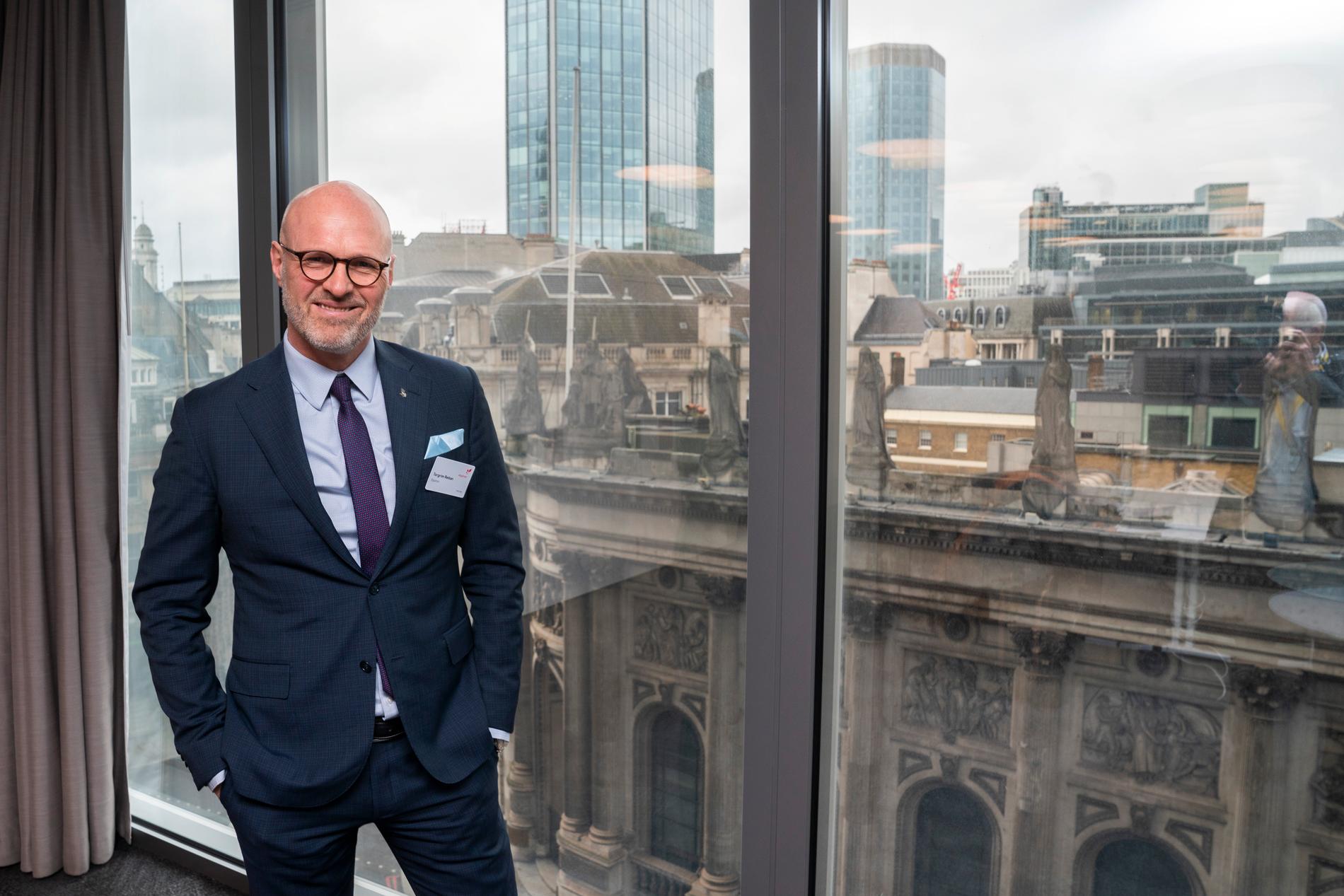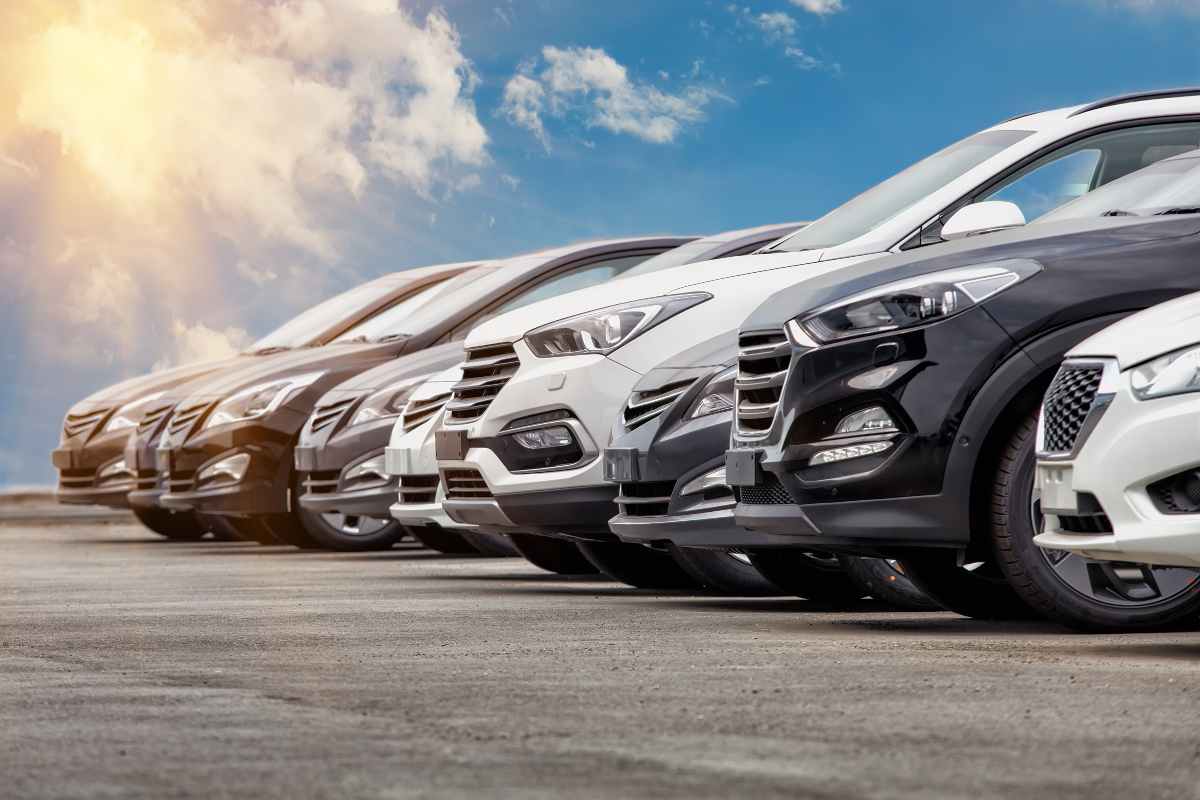LONDON (E24): Equinor will spend much of the money bin of more than 400 billion on the owners, and will not develop projects at any cost. – Must be good enough, says the CFO.
Equinor’s CFO Torgrim Reitan. Photo: Jon Ingemundsen, Stavanger Aftenblad Published: Published:
Less than 20 minutes ago
– We have 39 billion dollars in cash, says Reitan to E24.
Equinor’s money bin corresponds to approximately NOK 410 billion. This means that the company has great opportunities to buy companies and assets, and distribute much of the money to the owners.
Much of the money will go to the latter. Equinor will pay out 14 billion dollars to the owners this year, in the form of dividends and share buybacks, Reitan points out.
– What is happening is a significant repayment to the shareholders, which brings the debt ratio back into positive territory, says Reitan.
– We still want to have a very strong balance sheet, but with the uncertainty we have ahead of us, we want to run this very robustly, says the CFO.
Equinor currently has a debt ratio of minus 22 percent. This should normally be around 15–30 per cent. Reitan will not set a deadline for when the company will return to this more normal level.
– We are comfortable with being below that level. For us, it is important to be robust against the uncertainty we have. But over time we will move back to that level, says Reitan.
also read
Equinor promises stable oil and gas production
– Swings a lot
E24 also challenges Equinor CEO Anders Opedal on what he will use the money for, after two years of exceptionally high income.
– I get a lot of questions about it, Opedal says.
High revenues and a strong balance sheet give Equinor great muscle. But the boss recalls that 2020 was Equinor’s worst year in history, while 2022 and 2023 were the two best.
– This fluctuates a lot, and then it is about thinking long-term about how you use the capital, both that you are competitive in terms of dividends to shareholders, and that you invest wisely and have a strong balance sheet, so that you can withstand the challenges that may come into the energy markets in the future, he says.
He is open to using the money bin for both oil and gas and renewable energy.
– I will not comment on any future acquisitions. But the way things are going forward, it is important to be robust and stand up to the changes that may come in a troubled energy market, while at the same time expanding our business and investing in good projects, both in oil and gas and renewables, says Opedal.
– And then we have also said that since we have a negative debt ratio, capital dividends will be one of the tools to recover. We have said that having a competitive dividend is our priority, he says.
Equinor CEO Anders Opedal. Photo: Jon Ingemundsen, Stavanger Aftenblad
also read
Weaker from Equinor after record year
Both oil and renewable
Equinor has both bought and sold companies and assets in recent years.
– What we did last year was to buy up in oil and gas in the UK and in renewables in Denmark and Brazil, and sell out of Azerbaijan and Nigeria. This is a continuous part of the development of our portfolio, and we will see that in the future as well, says Reitan.
– We have a very solid balance, and that gives us leeway to use that tool, he says.
Reitan points out that Equinor wants to grow within renewable and low-carbon solutions, but that it also invests in oil and gas, particularly in core areas such as the UK, USA and Brazil.
– Within oil and gas, we on the NCS are interested in building length over time and focusing where we want to be. Internationally, we have some important core areas that we want to strengthen. We have Suncor and Rosebank in the UK, we have Sparta in the US and BM-C-33, or Raia, in Brazil, he says.
– And then there are assets that we want to sell over time. This will be a dynamic development, and there will be transactions in both oil and gas and renewables, he says.
also read
Equinor will distribute NOK 148 billion to shareholders in 2024
– Not at the expense of oil and gas
– Many people are concerned about the split between oil and gas and renewables, which do not have the same return. Is it difficult to maintain the restructuring plan vis-à-vis the investors?
– It is important for us to get the word out. Our investment in renewable and low-carbon solutions does not come at the expense of oil and gas, says Reitan.
– You can afford both?
– Yes. It is clearly progressing today. We are extending our ambitions to 2035. On the NCS, we will produce as much in 2035 as in 2020. So there are significant investments we will make there, and within the international business. Then comes renewable and low carbon at the top.
Equinor expects to maintain an average return of 15 percent right up to 2035, even as investments in renewables increase.
– And 15 per cent is quite a high return, if you compare it with the history of the industry. We see a fabulous opportunity to build something new that sits on top of what we have, while at the same time managing to maintain a strong return over these years, says Reitan.
Will hold back on spending
Reitan believes that Equinor has profited well from its renewable investment.
– We see a reasonable return compared to the risk we take. We must be very careful. We are more concerned with value creation than volume targets, he says.
He insists that the company will not bet on unprofitable projects.
– Then these production ambitions will have to give way, he says.
Among other things, the company has plans to produce 80 terawatt hours (TWh) of electricity from renewable energy by 2035. It also has plans to increase oil and gas production by five percent by 2026, and maintain production in 2030 at over two million barrels of oil equivalent per day.
– The analysts point out that Equinor has avoided expensive offshore wind rounds and postponed expensive projects such as Wisting and Bay du Nord. Have you been careful with your spending in recent years, and will that continue?
– It will continue. The projects that are allocated funds must be good enough, otherwise they will have to wait, says the finance director.
– Both Wisting and Bay du Nord are good examples of this. They are actually very good projects with great potential, but they can be even better. So they can come later. The same also applies to our renewable projects. If they are not good enough, then they have to wait, says Reitan.
2024-02-09 21:24:47
#Equinor #afford #acquisitions #Cash #pile #DKK #billion


/https://i.s3.glbimg.com/v1/AUTH_bc8228b6673f488aa253bbcb03c80ec5/internal_photos/bs/2023/H/6/3KjFXJTZuiPlPsBtO1lg/taca-copa-do-brasil-2023.jpeg)